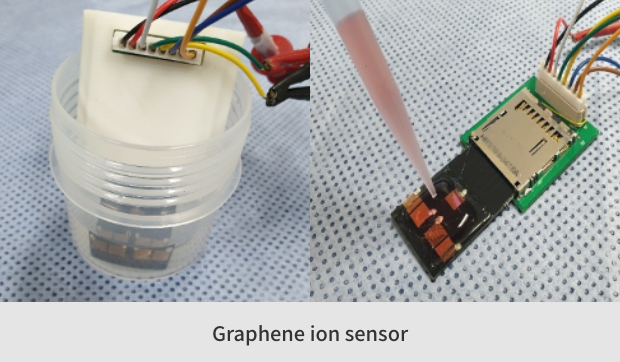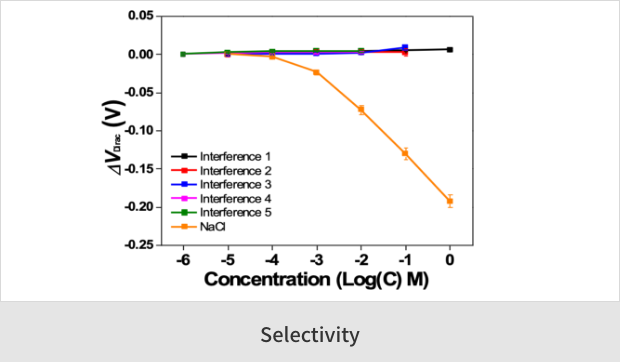Applications
Graphene Ion Sensor
Graphene Ion sensor For monitoring
electrolytes in urine
Excess electrolytes and waste products in the body are excreted through urine, and quantitative changes appear depending on food intake and health status. Since a change in the amount of electrolytes in urine means a change in your health, monitoring of electrolytes in urine can help you manage your health. G-Sensor can test electrolyte levels that were not possible with conventional urine test strips. Here we introduce a new way to monitor individual electrolyte levels
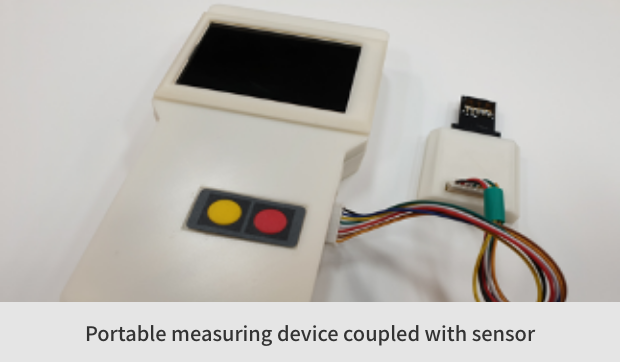
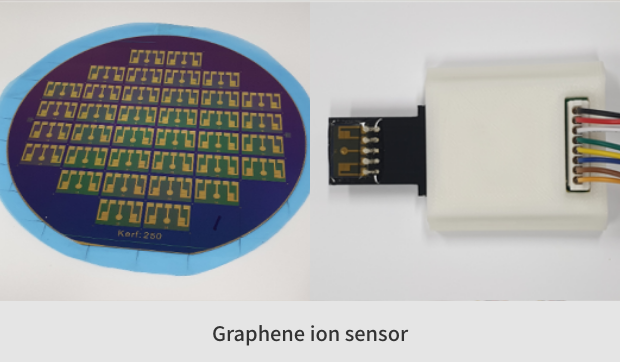
01 Feature

Urine diagnosis system
G-sensor can be easily used by anyone, anytime, anywhere.
Easily measure electrolyte
levels in urine with high
precision and high reliability
through disposable diagnostic
sensors and portable
measuring devices.

Mobile application
You can monitor your health status according to the level of electrolytes in your urine through mobile app.
Take care of your health with regular daily checkups and tracking health records.
02 Market background
Problems
Urine electrolyte tests can only be done in hospitals.
✓ The 24-hour urine collection method is very cumbersome.
✓ The burden of medical expenses and other incidental. expenses is high.
Commercial equipment is large and expensive and requires skilled personnel to use.
Portable equipment for diagnosing electrolytes in urine has not been developed.
Solutions
Make diagnostic kits that can be used anytime, anywhere
Make sensor and test device portable
Make inexpensive precision sensor tips to reduce user burden
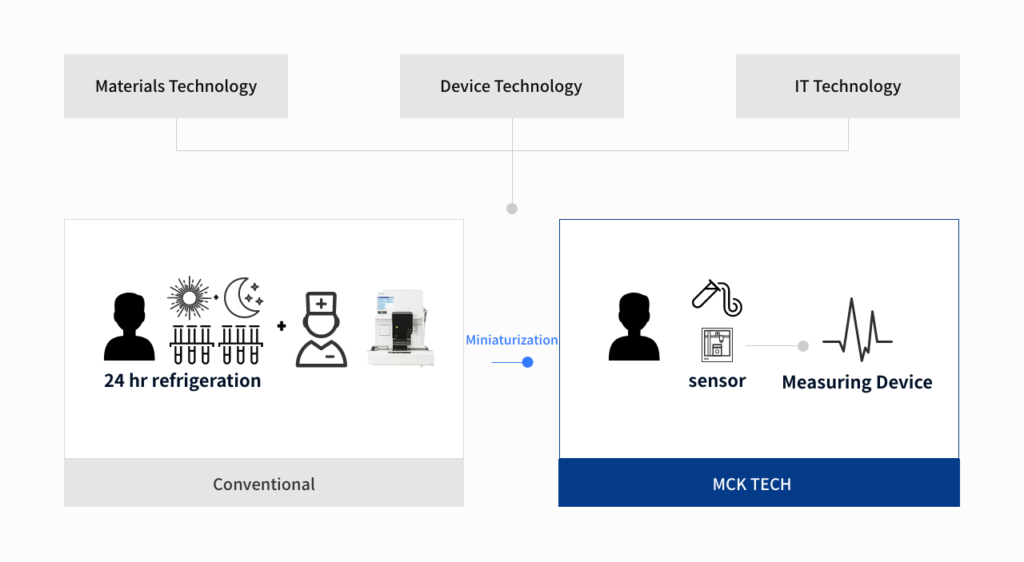
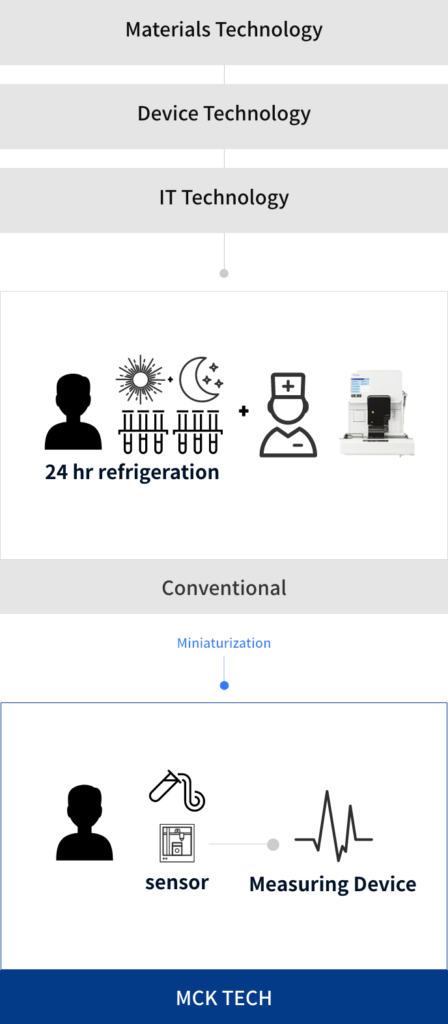
03 Test electrolytes & Hazardous disease
Test electrolytes
Hazardous disease (Excessive or deficient electrolytes)
Na+
hyper-&hypo-natremia, dehydration, nephrotic syndrome, kidney disease, liver disease, cirrhosis
K+
hyper-&hypo-kalemia, kidney disease, hyporeflexia, arrhythmias, cirrhosis
pH(H+)
chronic liver failure, urinary tract infection, diabetes
Cl-
kidney disease (salt-losing nephropathy), polyuria, potassium depletion
04 Product Details
Specifications

Disposable ion monitoring sensor (Na+, K+, H+, Cl- available)

Measuring Device Size: 189 X 90 X 30 Weight: 212 g)

Sensitivity (58 mV/Decade)

Expandability (Antibodies, DNA, gas sensors, etc.)

Connectivity
(Bluetooth)
G-ISFET(Graphene-Ion Sensitive Field Effect Transistor)
G-ISFET has the advantage of being able to make it smaller than the conventional rod-type ISE through the semiconductor
manufacturing process.
MCK Tech Co., Ltd. Has developed a new graphene-based reference electrode compatible with the semiconductor manufacturing process of G-ISFET. (PCT/KR2020/016911, PCT/KR2020/004710 and 3 others)
Our patent technology can realize the miniaturization and mass production of G-ISFET by solving the structural problem of Ag/AgCl reference electrodes used in conventional ISE and ISFET.
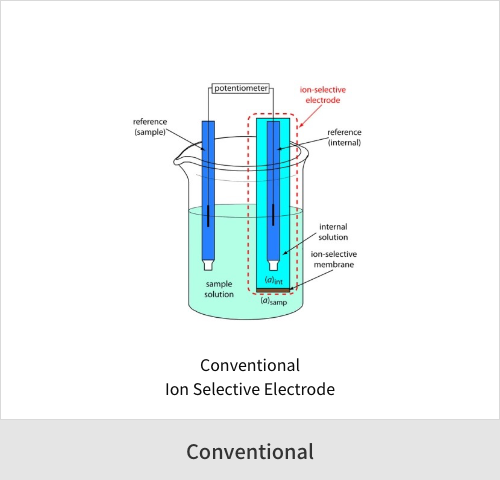
Development of a new reference electrode
Solving the problems of the conventional reference electrode
- Easily fragile
- Require an internal
filling solution - Difficult to miniaturize
- Expensive
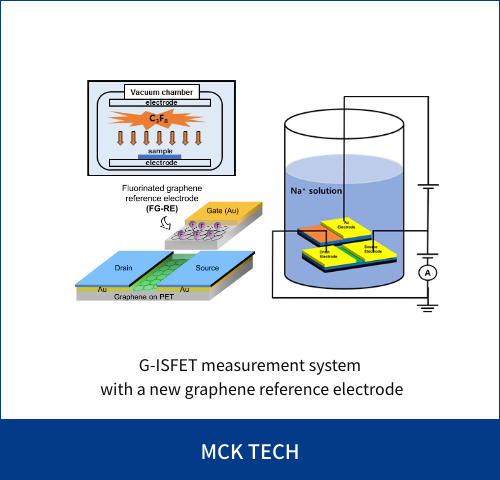
Sensing results
Sensitivity and selectivity is confirmed using mixed solution of sodium ion and interfering ions
Excellent sensitivity are observed in the range of several to hundreds of mM (10-3 to 100 mM)
